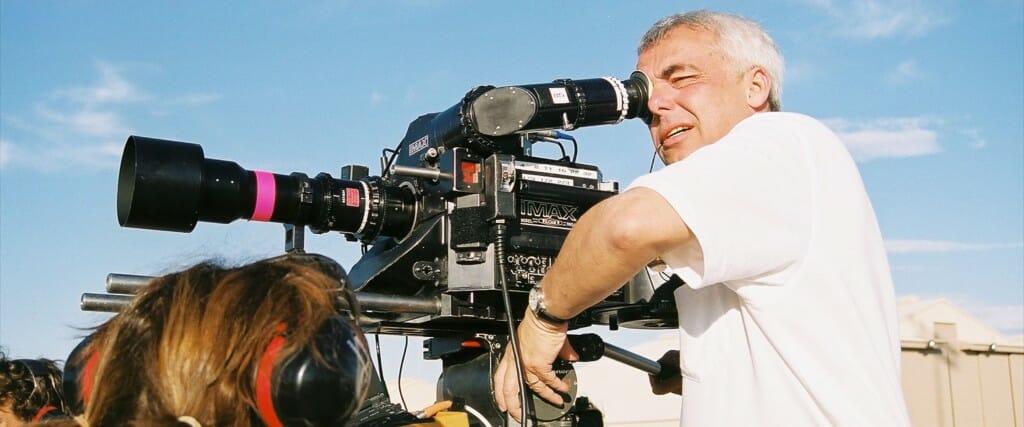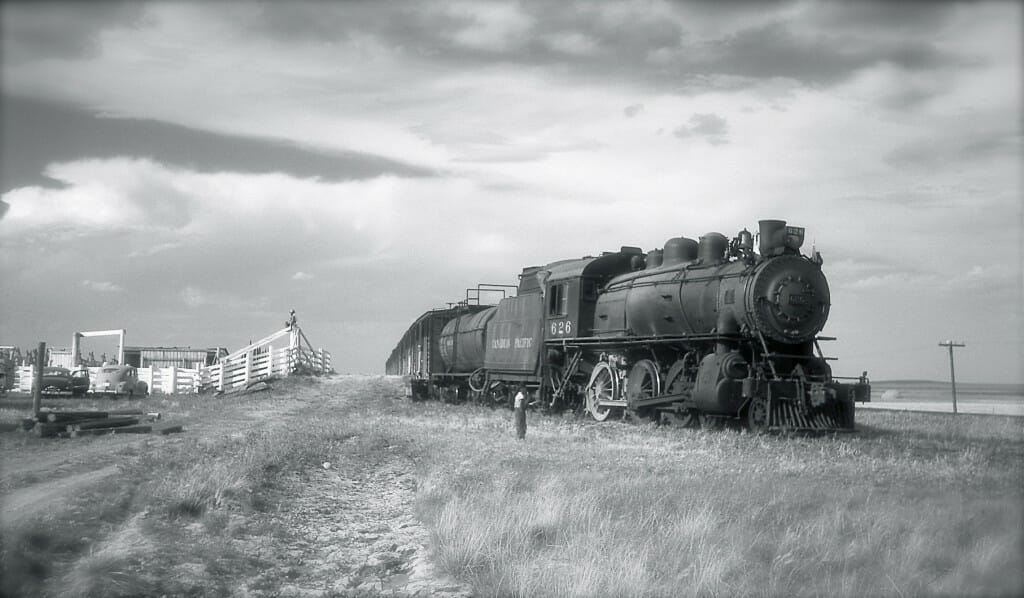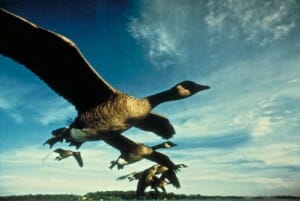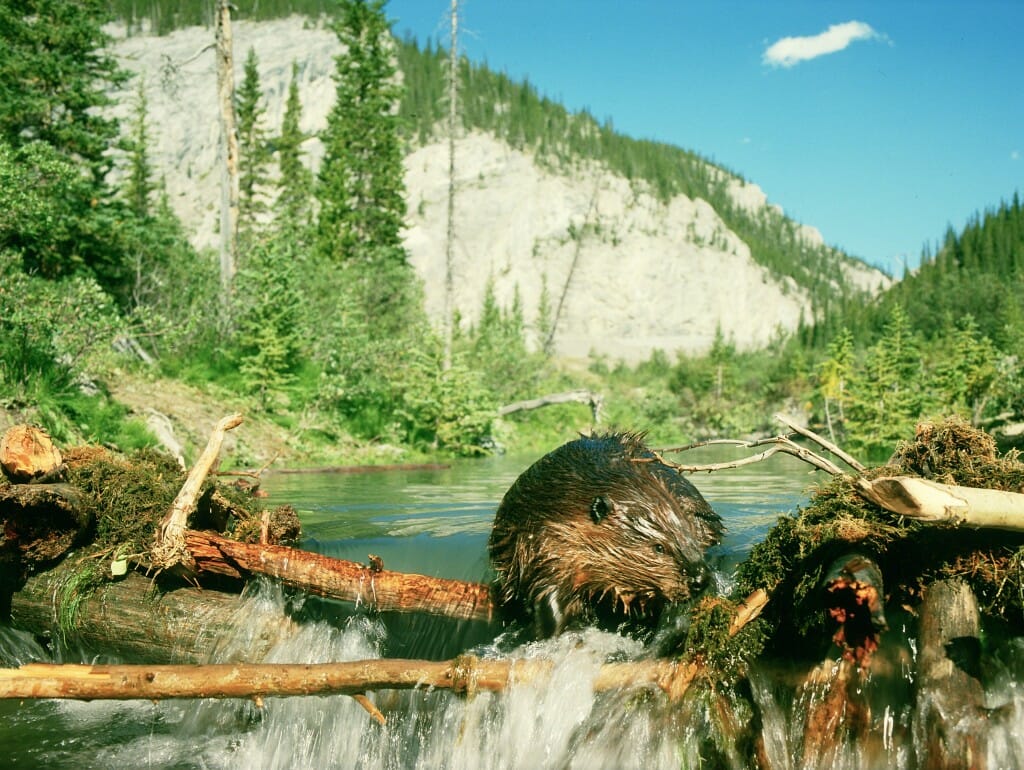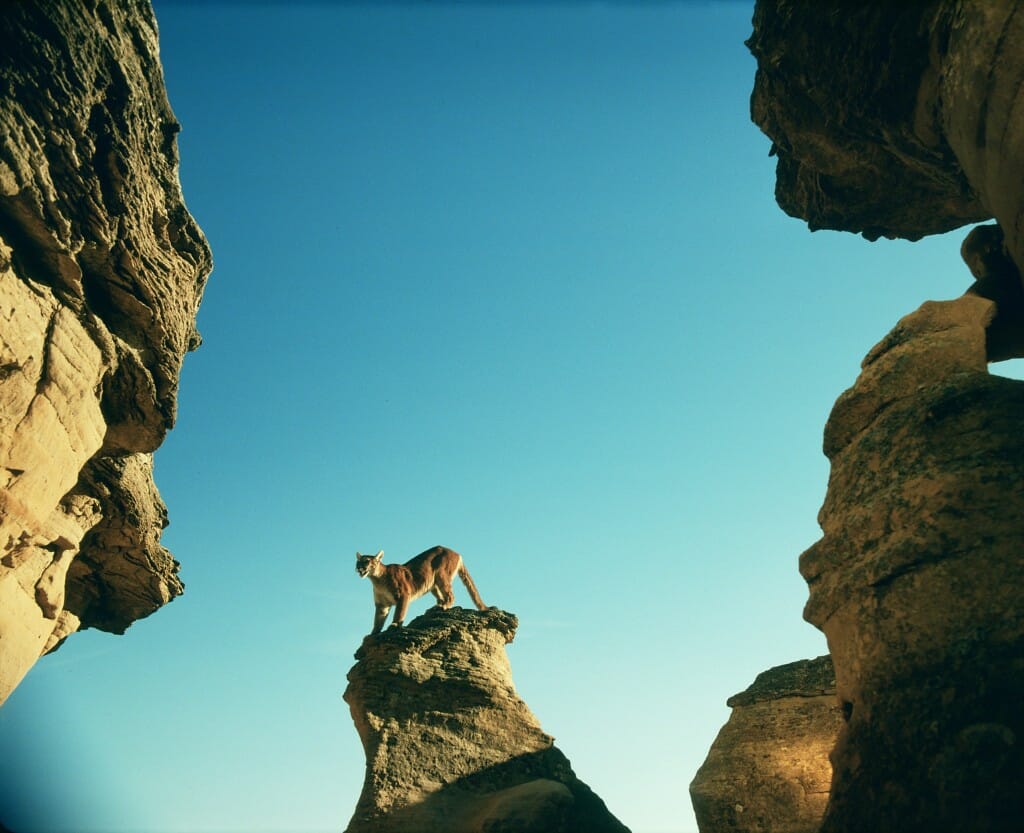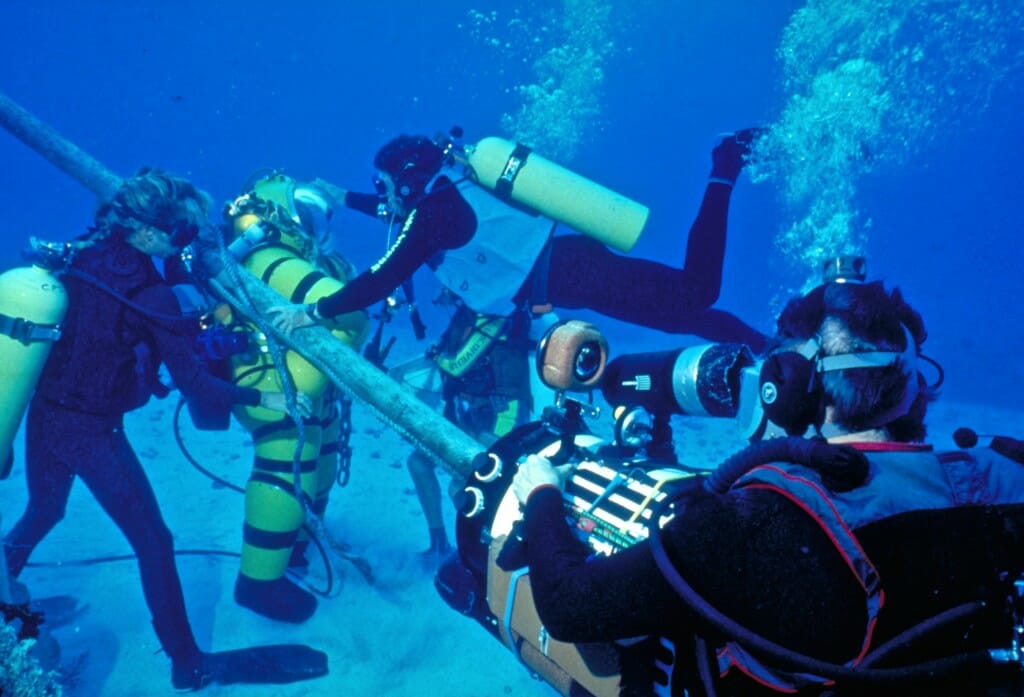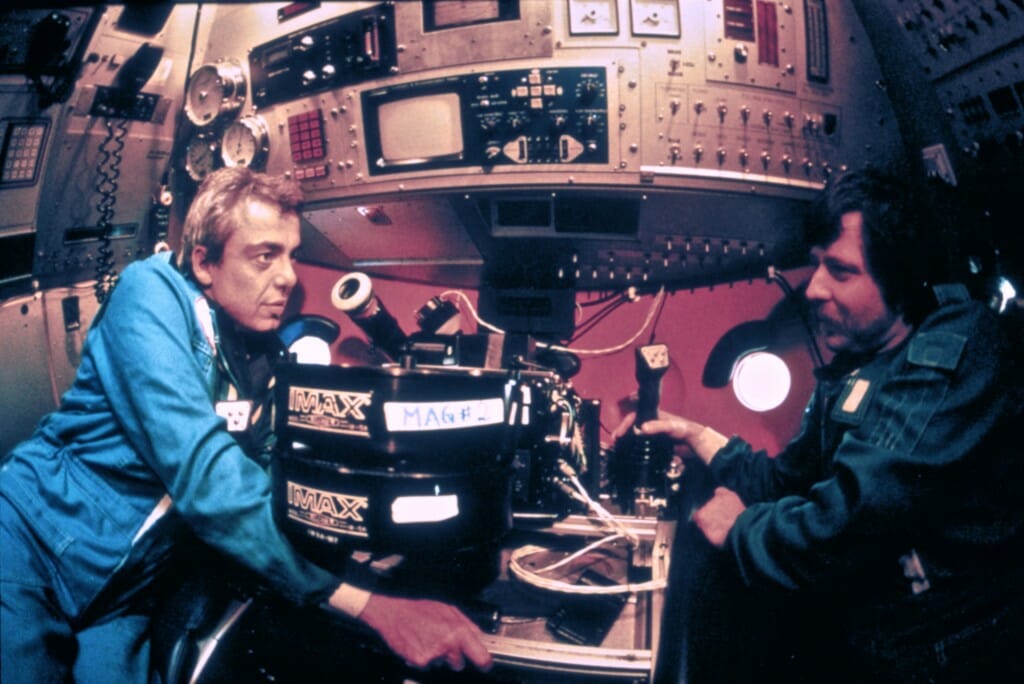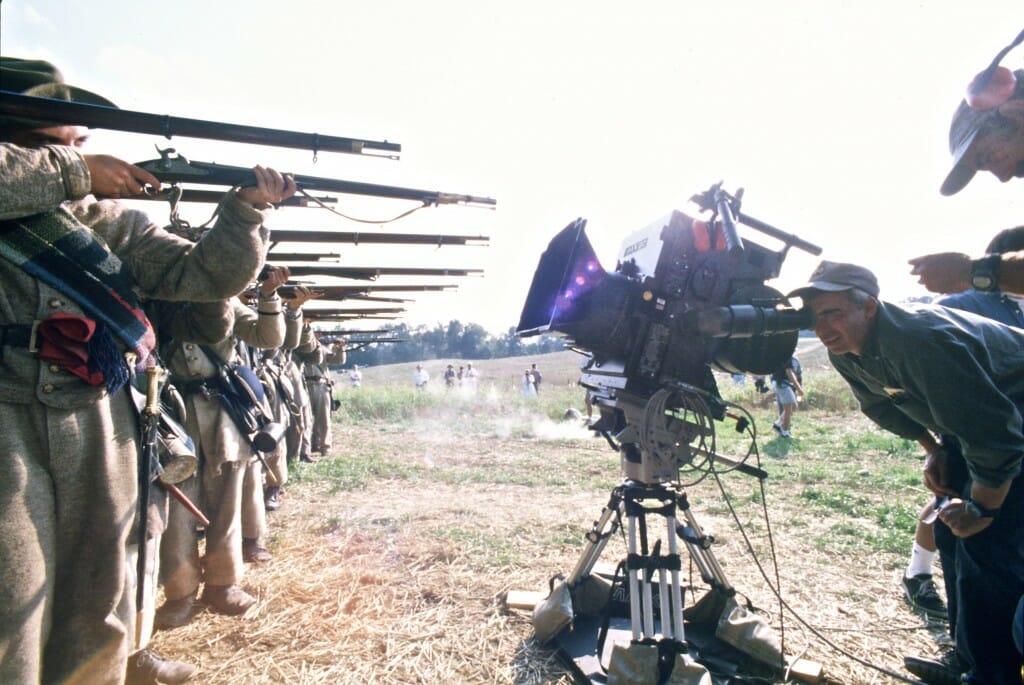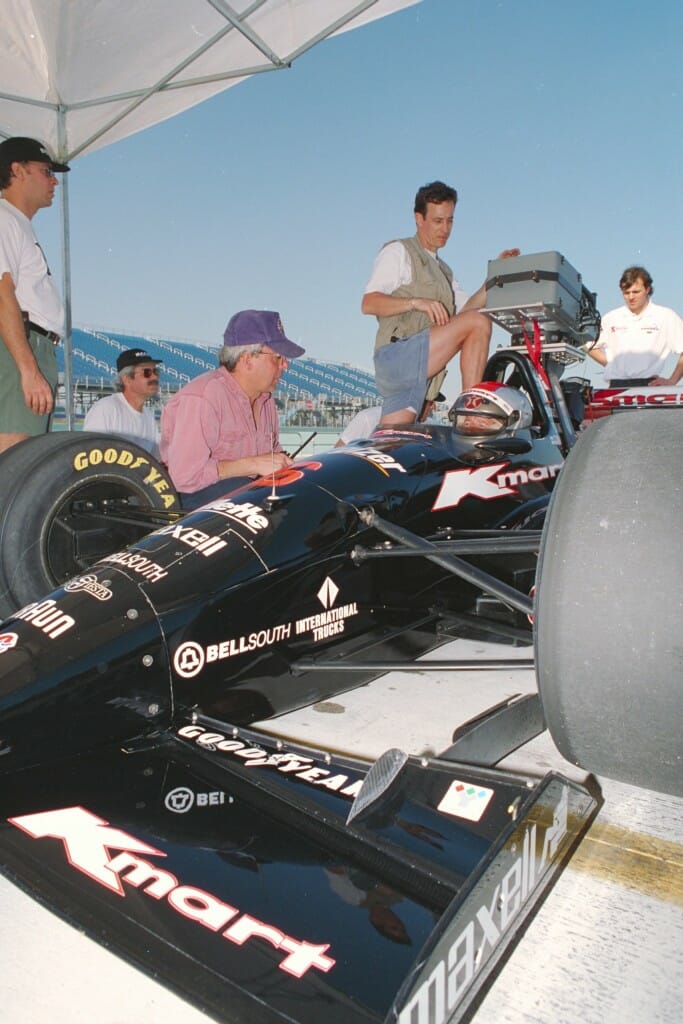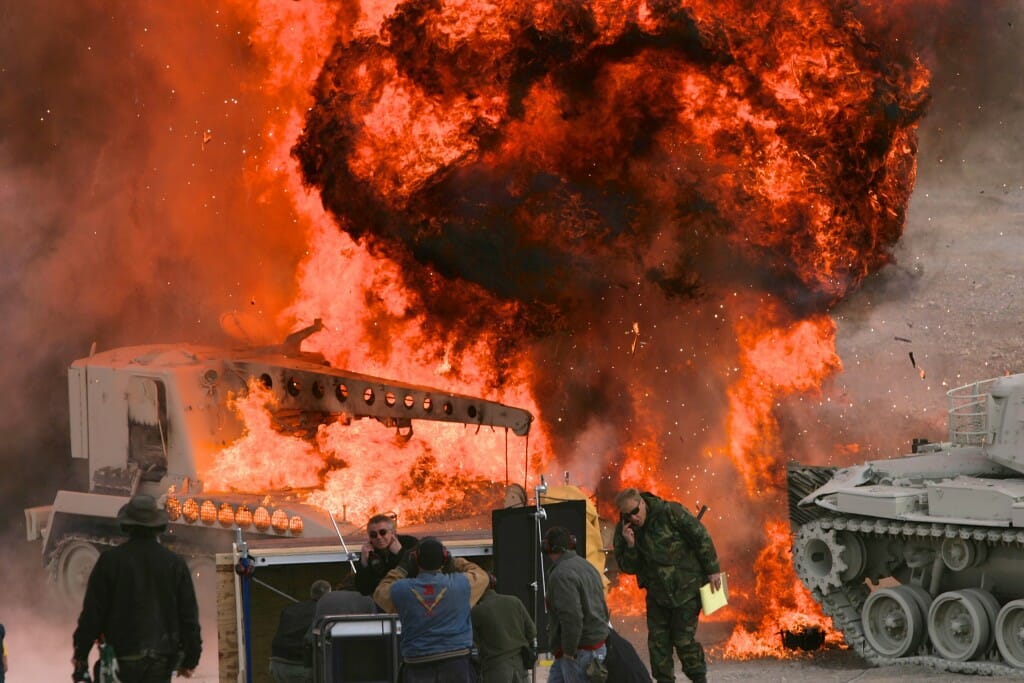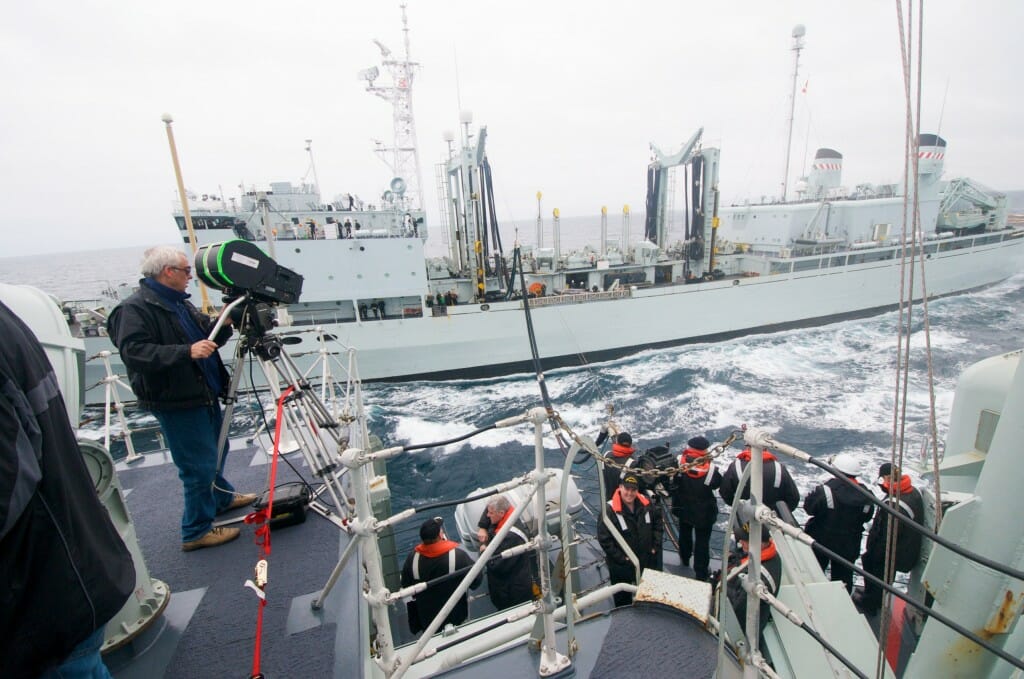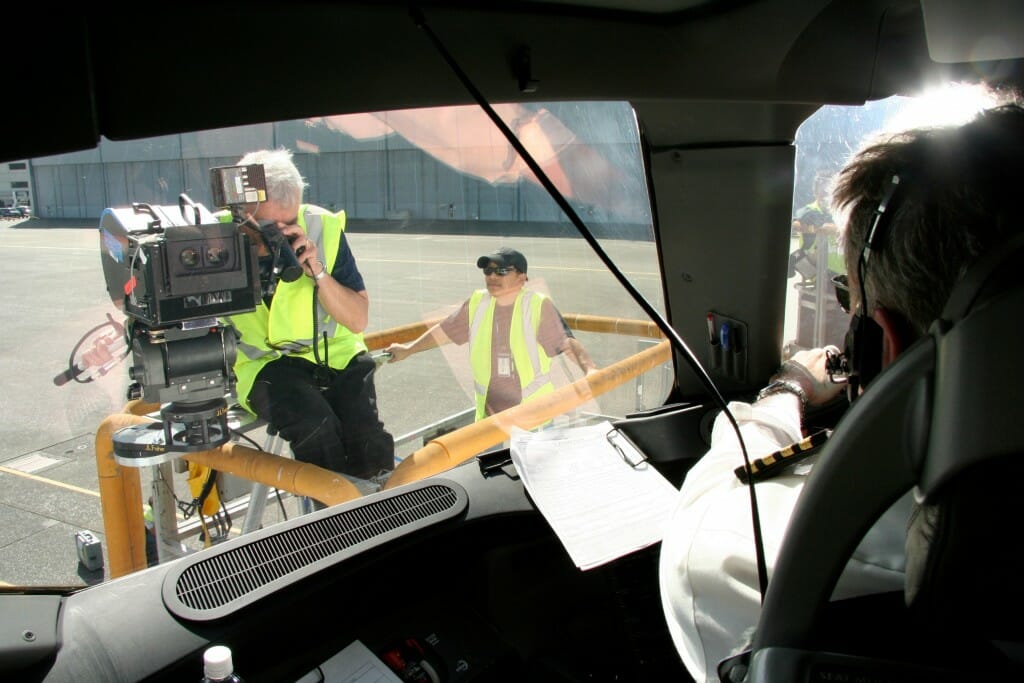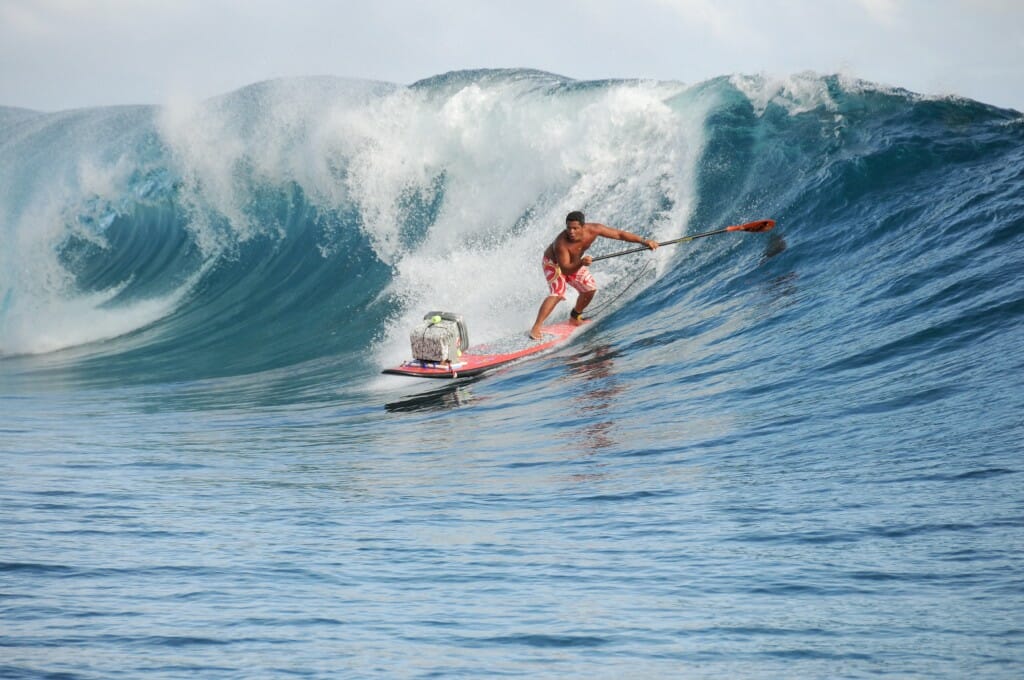
A Bit More About Stephen
STEPHEN LOW IS RECOGNIZED by audiences and peers as one of the world’s foremost large format filmmakers. His creative vision, storytelling ability and commitment to cinematic innovation, together with his persistence on complex and large-scale projects, have yielded an extraordinary body of work enjoyed by audiences around the world. His career spans more than three decades and his filmography includes more than 17 giant screen films and award-winning work for television. (See Awards & Honours)
Stephen’s output encompasses a remarkable diversity of themes, from science and nature, to history and human affairs, to sports and drama, but he never seems to tackle the simple subjects. This Ottawa-born filmmaker has put audiences into the cockpit of a screamingly fast Indy car (Super Speedway) and into a fighter jet (Fighter Pilot) and he’s pioneered production in the revolutionary IMAX 3D medium. He is also one of a relatively small number of human beings privileged to have traveled to the abyssal depths of the ocean—first, to film the wreck site of the Titanic for Titanica (1991), and then to the Mid Ocean Ridge to tell the story of the discovery and scientific exploration of hydrothermal vents in Volcanoes of the Deep Sea (2003).
In the challenging field of IMAX filmmaking, Stephen has set himself apart—demonstrating a stellar ability to marry an independent creative vision with the capacity to manage the opportunities and risks of using the world’s largest and most expensive film format (the “15/70” format specific to the IMAX® system). Virtually every project he has undertaken has also involved the invention or harnessing of some remarkable new innovation in technology or filming technique: from filming birds in flight, to mounting an IMAX camera on a steam locomotive or an Indy car; from integrating high-powered HMI cinema lights into deep sea submersibles, to collaborating with leading animators to shape sequences using the revolutionary SANDDE stereo drawing and animation system; or bringing archival 19th-century stereo glass-plate photographs to life on the IMAX screen. Stephen has been recognized with important career honours and his films have earned a host of awards around the world. He is a member of the Academy of Motion Picture Arts and Sciences and an honorary member of the Director’s Guild of Canada.
Current & Recent Work
Stephen recently completed Train Time (2020) a rail odyssey that sweeps audiences across the American landscape to explore the workings of a modern freight railroad. Stephen also recently directed Secrets of the Universe (2019) a film centered around international research into particle physics that is unfolding at the giant hadron supercollider at CERN in Switzerland. Released in 2017, The Trolley propels audiences on a globe-spanning exploration of streetcars and electrified rail and celebrates their contribution to our urbanized world–the film had its World Premiere as a special IMAX presentation at Hot Docs, Toronto (May 2018). Stephen also directed Aircraft Carrier 3D (2018), a giant screen experience focusing on the world of naval power and the astounding activity and air operations aboard a giant Nimitz-class aircraft carrier. Stephen is currently at work on several new projects.
In 2011, Stephen completed Rocky Mountain Express a film that follows the challenges of building Canada’s first transcontinental railway in the age of steam. The film was the first rail-themed film ever created for the giant screen. The filmmaker took on the burden of funding the project, but secured major cooperation for the project from the Canadian Pacific Railway (CPR) which allowed him and his team unprecedented access to the CPR’s restored “2816” steam locomotive and mainline track over several seasons.
Five years in production, Rocky Mountain Express had its Canadian premiere in 2011 at the Canadian Museum of History in Gatineau and its US premiere at the Chicago Museum of Science and Industry. The film received unprecedented accolades from audiences attending extended runs of the film in markets across North America as well as internationally in such locations as The Hague, Lucerne and Beijing. The film was awarded both Best Film and Best Cinematography by giant screen theaters from around the world in 2012.
Beginnings
BORN IN OTTAWA and raised in Montreal and southern Alberta, young Stephen was no stranger to film. His father, Colin Low, is a distinguished documentary filmmaker and cinema pioneer whose career at the National Film Board of Canada spanned over 50 years and garnered the institution a truckload of awards, including nine Oscar nominations. For young Stephen, the work of making films didn’t have much appeal. “As a child,” recalls Stephen, “filmmaking seemed like extremely boring stuff. Everything just took forever.” Eventually though, he too was drawn to the craft. Stephen says the most important thing he learned from his father had nothing to do with technique, rather “it was a fascination with everything; there are a lot of things out there that are really interesting, and through filmmaking I could participate in them.”
An early fascination for the young Low was sparked when his father brought him by streetcar to visit the rail yards in Montreal in the late-1950s when the last of the great steam locomotives were still in service. This early experience kindled a lifelong interest in trains that would culminate in Stephen’s production Rocky Mountain Express decades later. Stephen studied political science at Lakehead University in Thunder Bay, graduating in 1973. Out of University in the early 70s, he worked as a brakeman on freight trains on the Canadian Pacific Railway before ultimately turning his attention to the craft of filmmaking.
Stephen began his film career in 1976, working as a cameraman and editor in Newfoundland. After a few years crewing on films in various capacities, he was itching to make one of his own. While sitting on a park bench, he read a story in The Globe and Mail about a new jet being developed by Canadair—the Challenger. The company had sold 50 of them before a single plane had even been built. The young film enthusiast was taken by the story. He walked over to a payphone and told the company’s head of public relations that he wanted to make a documentary about the plane. “Come on over,” was the answer he got. The film, Challenger: An Industrial Romance, was released in 1980 and wound up winning numerous awards including the distinguished Grierson Award for achievement in documentary film. It was quite a debut. Once it was done, Roman Kroitor – one of the founders of IMAX Corporation – would get Stephen involved in his first giant-screen project as a researcher on IMAX Corporation’s early space shuttle film Hail Columbia!
Stephen went on to write and direct many documentaries including such non-IMAX films as The Defender and The Train, and his work has won numerous awards worldwide. He also served as executive producer of The Human Race, an award-winning four-part television series on the environment. However, much of Stephen’s career has been taken up with the crafting of unique stories for the world’s largest cinema medium.
Crafting for the Giant Screen
STEPHEN LOW’S INTRODUCTION to the IMAX® medium dates back to as early as 1970, when the young Low and his father, filmmaker Colin Low, took thousands of 3D still photographs and blew them up on a large screen—a creative exercise on the way to the realization of some of the first 3D IMAX® films and technological innovations that would not come for another decade and a half.
Stephen’s first working foray into the large format field was as a researcher on Hail Columbia! Soon afterwards, he directed his first IMAX® film, Skyward, for the Suntory Pavilion at the 1985 Tsukuba International Exposition in Japan.
The success of Skyward would lead to Stephen’s second IMAX® film for a Japanese sponsor. He managed to persuade the Chubu electric power company, one of Japan’s largest utilities, that rather than a film about their nuclear power installation, what they really wanted was a film about Canada’s national animal.
For the production of Beavers, the filmmaker and his team hand-reared beavers in order to acclimate them to the bright lights and to the sound of the enormous IMAX camera, and cast each beaver according to their natural task inclination. Stephen served as underwater cameraman as well as writer and director on the project—the beginning of a career-long engagement with underwater photography and natural history filmmaking. Filmed in the Canadian Rockies and in Ontario, Beavers was crafted with lyricism and a touch of whimsy, going on to become a giant screen family favourite and one of the most popular IMAX films of all time. The film has remained in active exhibition in theatres for more than two decades and was voted into the IMAX Hall of Fame in 2004 by IMAX theaters from around the globe.
Into the Third Dimension
Stephen’s next film, once again made for Suntory, broke new ground technically and creatively. For The Last Buffalo (only the second 3D IMAX® film ever made) Stephen worked with Noel Archambault and Bill Shaw at Imax Corporation to develop a 3D beam-splitter camera system and rig, ultimately pushing them to their limit in the challenging terrain of the southern Alberta badlands. A poetic, immersive and surreal film without narration, The Last Buffalo delivers a strong environmental message. Produced for the Osaka ’90 Expo The Last Buffalo captures nature’s magic in the hoodoos and badlands of Southern Alberta. The most popular attraction at the fair, the film drew some 1,940,000 visitors during the six-month exhibition. The Last Buffalo went on to become an IMAX® classic.
Exploring the Deep
The next two films that Stephen produced and directed took him to sea, marking the start of an important new chapter in his career. Aquanaut was his ambitious first foray into drama, filmed almost entirely underwater, with Low once again acting as an underwater cameraman in addition to writing, directing and producing.
In 1992, he broke new ground with the feature-length IMAX® film, Titanica. Low added a new title to his resume—expedition leader—as he and his team were the first westerners to work with the P.P. Shirshov Institute of Oceanology and their MIR submarines following the fall of the Soviet Union.
He worked with Deep Sea Power and Light to develop crucially powerful new lights for use in the deep ocean, enabling audiences to see the wreck of the Titanic truly for the first time.
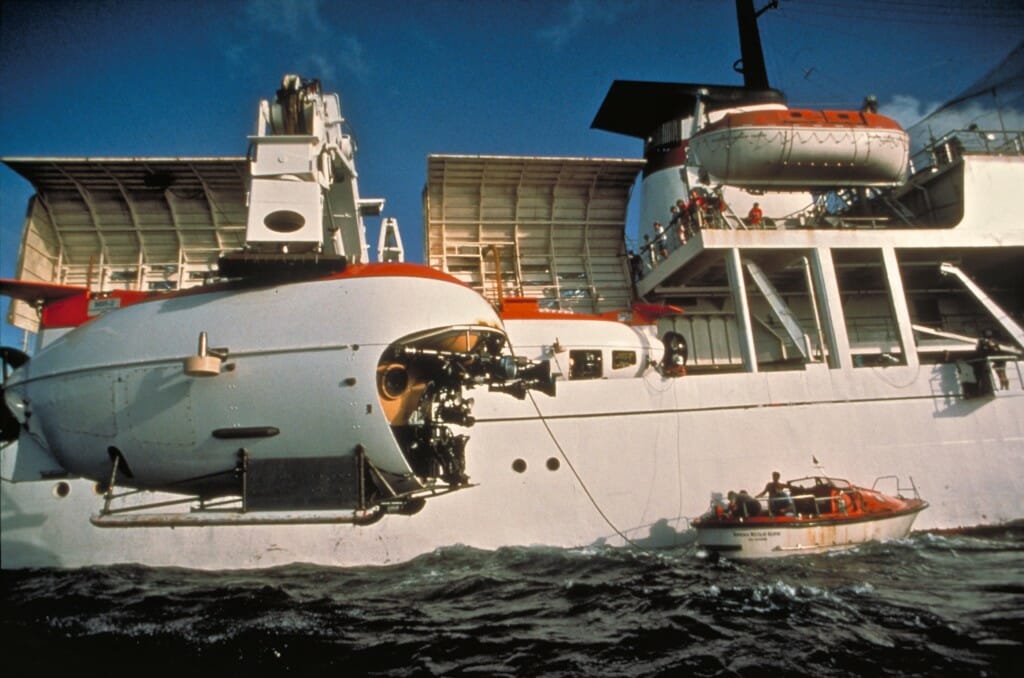
A Russian Mir submersible being launched off the deck of the research vessel Akademik Keldysh (a scene from Titanica).
The IMAX® crew did 18 dives to the broken hulk, with Low, Paul Mockler and Ralph White filming from the twin Mir submersibles. The groundbreaking film documented the expedition and the wreck site and captured the scope and drama of this maritime tragedy, relating as well, the poignant story of Eva Hart, one of the last living survivors of the disaster. The scenes in Titanica would catch the eye of another filmmaker and be echoed in a future Hollywood epic of similar name.
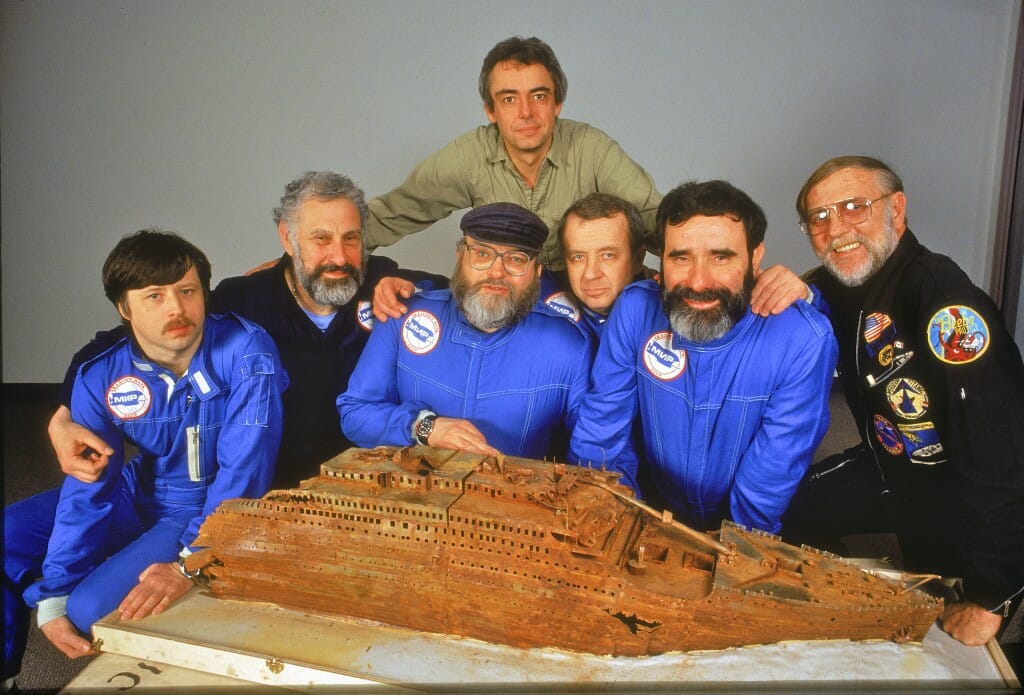
Above. Members of the Titanica expedition pose before a model of the wreck of RMS Titanic. Left to right: Evgeny “Genya” Cherniev, Mir pilot; Lev Moskalev, biologist (P.P. Shirshov Institute); Steve Blasco, marine geologist (Bedford Institute, Canada); Anatoly Sagalevitch, Head of manned submersibles (P.P. Shirshov Institute); Emory Kristof, photographer (National Geographic Magazine); Ralph White, submersible cameraman and navigator; Stephen Low, filmmaker (top).
Exploring the Power of 3D
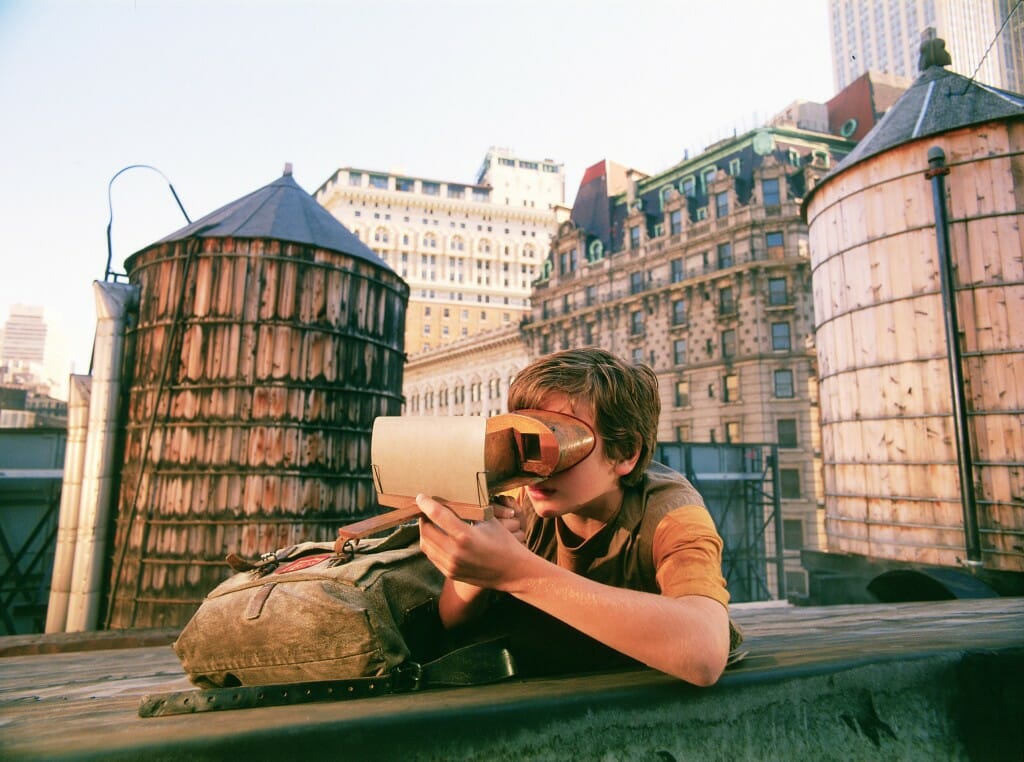
A scene from the 3D drama Across the Sea of Time (1995) featuring Peter Reznick as a young Russian stowaway in New York City.
Stephen’s next two films were made for Sony New Technologies and Columbia Pictures. The Last Buffalo had caught Hollywood’s eye, and they came to Low to make a film to launch the new flagship Sony IMAX® 3D Theater at Lincoln Center in New York. Stephen faced the multiple challenges of making a drama in IMAX® 3D (not the least of which was financial) by returning to an early interest in 3D still photographs. To make Across the Sea of Time, he wove together century-old glass plate negative stereo photographs of New York City with the fictional story of a young stowaway in search of his family roots in modern New York. The result was a haunting and evocative film with a humanity and emotional quality rarely seen in large format films.
Excited by the beauty and potential of the thousands of turn of the century stereographs he had seen while researching Across the Sea of Time, Stephen used a similar combination of live action and archival photographs for a second IMAX® 3D film produced for Sony Pictures. Narrated by Ann Bancroft, Mark Twain’s America is a rich and poignant recounting of the life of America’s great humorist, author, newspaperman and stage personality.
Car Racing
In 1997 Stephen capitalized on his life-long love of open-wheel racing with the release of Super Speedway featuring Michael and Mario Andretti. Once again, the filmmaker’s distinctive style was evident: the film blends technology (in both the filmmaking and the content) with creative storytelling, character development, and humour. Stephen and his team developed camera-mounting systems that enabled Mario Andretti to drive an Indy car equipped with a 50lb IMAX® camera at over 230mph alongside the full field of Indy competitors. Filmed at events across North America, including the Toronto Molson Indy, the film would be narrated by Newman-Haas racing team owner and celebrated actor, Paul Newman.
Back to the Depths
Over the years, Stephen has maintained an interest in deep ocean exploration. On his expedition to the Titanic, he had become passionate about the deep, and the belief that rusty pieces of human history were actually the least interesting part of the isolated world at the bottom of the sea. In 1998 he turned his attention to a project that would consume his attention for the next five years. With the collaboration of Rutgers University in New Jersey and major funding from the National Science Foundation, the filmmaker and his team equipped the US deep sea submersible Alvin with high-powered lights and an IMAX camera and began filming hydrothermal vent sites located at abyssal depths on the planet’s Mid-Ocean Ridge. Volcanoes of the Deep Sea, explores the mystery of strange fossil-like hexagonal patterns on the ocean floor and the implications of sulfur-based (chemosynthetic) ecosystems thriving along the planet’s tectonically active ridge system.
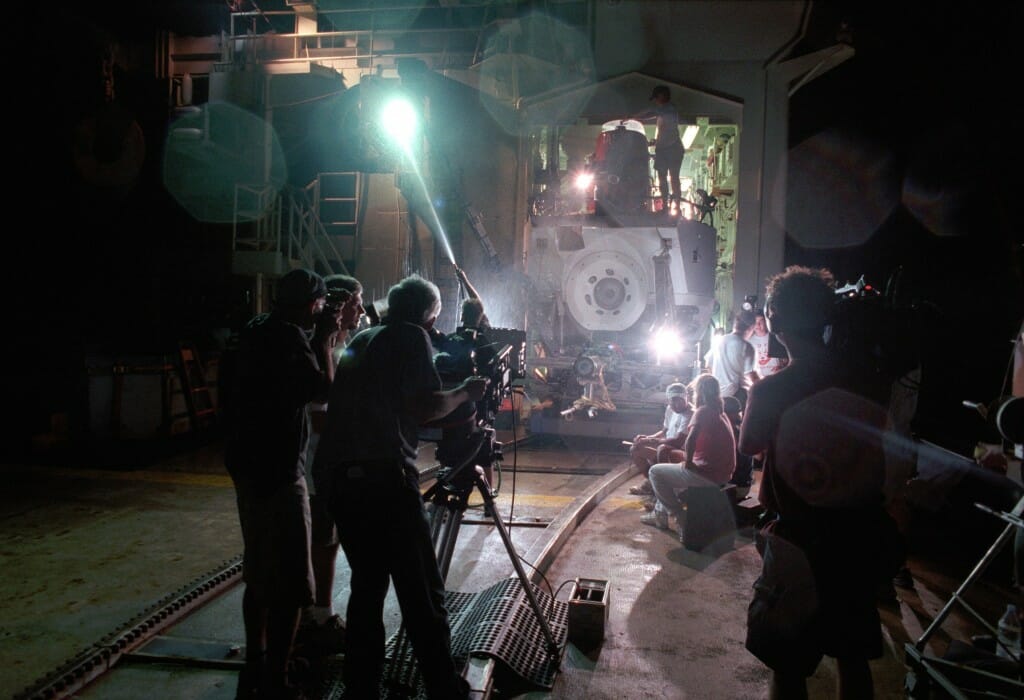
Behind the camera on the deck of RV Atlantis (Woods Hole Oceanographic Institution). Newly installed high-powered lights are tested on the submersible Alvin.
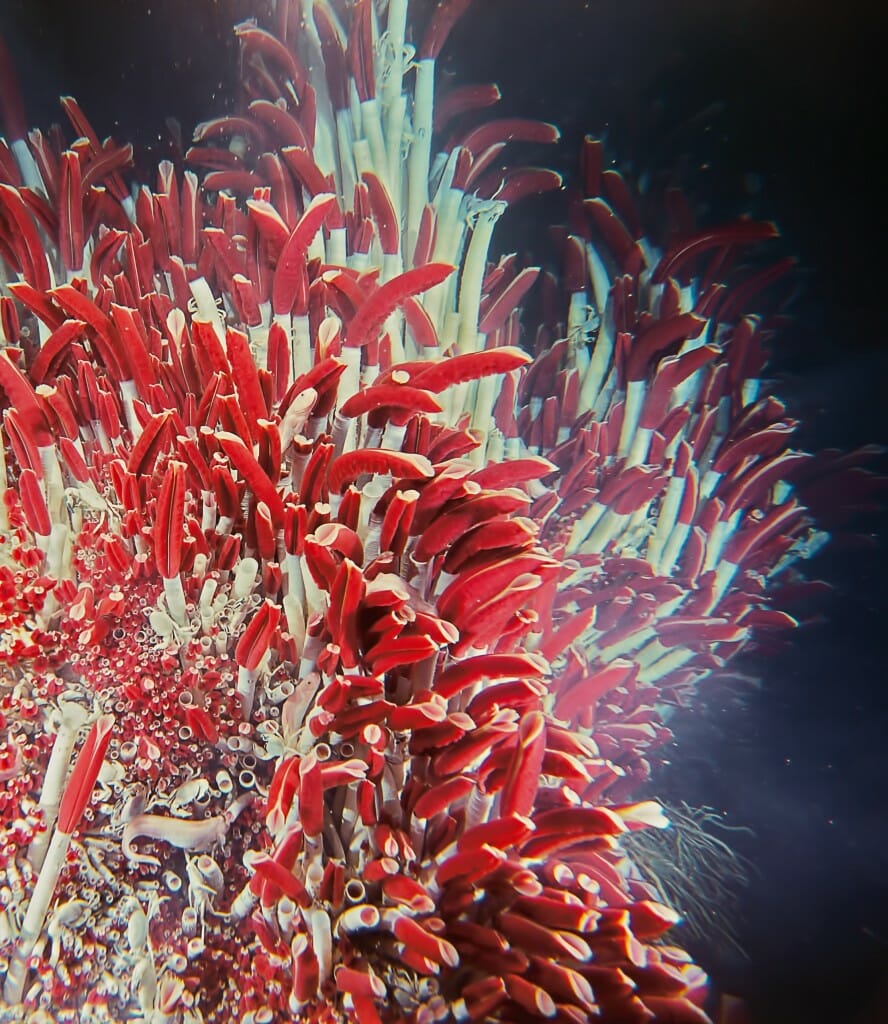
Giant tube worms growing on a hydrothermal vent in the deep Pacific. (Scene from Volcanoes of the Deep Sea.
The Volcanoes of the Deep Sea project would turn out to be one of the most challenging films Stephen’s team had ever undertaken. Despite struggling to hold together the project’s financing in the wake of the 9/11 era, the filmmaker was able to lead expeditions to film in a dozen locations, ultimately succeeding in conducting more than 20 deep sea dives and securing unprecedented coverage in both the Atlantic and Pacific oceans. Revealed by the team’s advanced lighting system and high-fidelity IMAX camera were astoundingly dense communities of giant tube worms and swarms of shrimp subsisting along the flanks of great chimneys (“black smokers”) that spewed toxic superheated fluids.

A scene from Volcanoes of the Deep Sea aboard the research vessel Atlantis. Left to right: Rich Lutz, the project’s chief scientist (Rutgers University); Dolf Seilacher, palaeontologist (University of Tubingen); Peter Rona, geologist (Rutgers University).
Volcanoes of the Deep Sea would feature research by German paleontologist Dolf Seilacher (University of Tübingen), geologist Dr. Peter Rona (Rutgers University) and the project’s chief scientist and biologist Dr. Richard Lutz (Rutgers University), as well as the Woods Hole Oceangraphic Research Institute’s deep-sea submersible Alvin. The film was released in 2003 with actor Ed Harris narrating.
Skyward Again
Fighter Pilot: Operation Red Flag hit screens in late 2004 to popular and critical acclaim. The film follows fighter pilots and crews from six nations, including Canada, as they struggle through the largest and most demanding air combat training exercise in the world at Nellis Air Force Base in Nevada. Stephen and his team spent more than two years in negotiations with the US Air Force and others to secure unprecedented access to this event. The final film combined stunning live-action filming as well as special effects scenes and a score by composer Michel Cusson to deliver a soaring, nail-biting experience of aerial combat.
New Collaborations, New Vistas
IN ADDITION TO HIS OWN FILMS, Stephen has made important contributions to numerous other projects, including writing the narrative for the IMAX® films Gold Fever and the award winning Jane Goodall’s Wild Chimpanzees and Mysteries of the Great Lakes—films directed by doc-maker David Lickley and produced out of the Sudbury-based museum Science North. Stephen’s successes and reputation for storytelling excellence, together with effective collaborations have enabled him to continue to produce films with diverse funding and partnerships—often taking the filmmaker beyond his country’s borders into new and unique collaborations and bringing his work to new audiences.
Rescue (2011) a 3D film for IMAX screens, focuses on the Haiti earthquake and the work of civilians and military actors engaged in global disaster response, including the Royal Canadian Navy and the U.S. Air Force.

Rescue crew members and supporters during filming in the aftermath of the Haitian earthquake in 2010.
Produced over several years during the development and testing of the 787 Dreamliner, Legends of Flight 3D (2010) explores the evolution of flight—from bi-planes and gliders to vertical-take-off-and-landing craft (VTOL) to a new generation of flying machines shaped with carbon-fiber composites. Along the way, audiences soar through the skies, discovering insights from nature’s own flyers. Developed with the collaboration of Boeing, Legends of Flight is exhibited permanently at the Smithsonian National Air and Space Museum in Washington, DC.
The Ultimate Wave Tahiti (2010) features nine-time world surfing champion Kelly Slater in a 3D film about the art and science of waves and wave riding. As the surfers hunt for the ultimate wave experience, the film elucidates the physics of wave energy and the creation of breaking waves. For the project, Stephen’s team took on the challenge of large format filmmaking in big surf head-on and succeeded in putting audiences in the center of the action as never before.
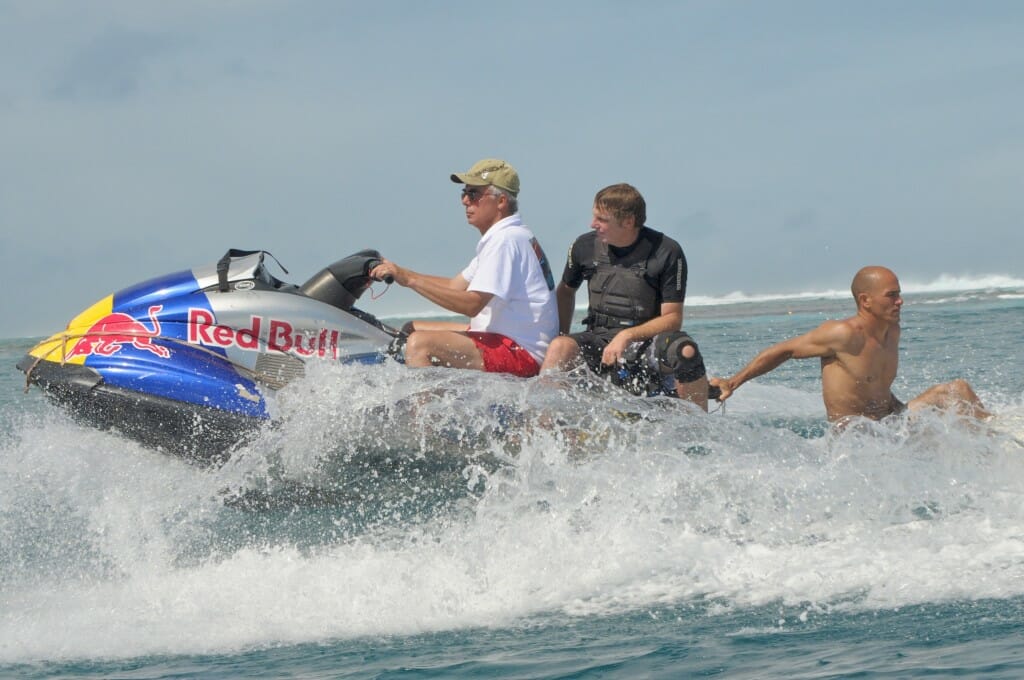
The director with surfing cameraman Mike Prickett and surfing legend Kelly Slater during production of The Ultimate Wave Tahiti 3D.
LOW CONSISTENTLY PUSHES THE LIMITS of cinema with his imaginative and powerful films. Stephen’s films are typically character and story driven and ultimately organic. He has a love for and fascination with nature as well a deep appreciation of technology and with the way things work, but his point of view and style of delivery are painterly and romantic. He has a passion for the world around him, for the environment, for character, and always, ultimately, for a good story. He weaves remarkable true stories on the giant screen at the same time as he works to push audiences to places they have never been and perhaps could never go, but for the magic of cinema.

